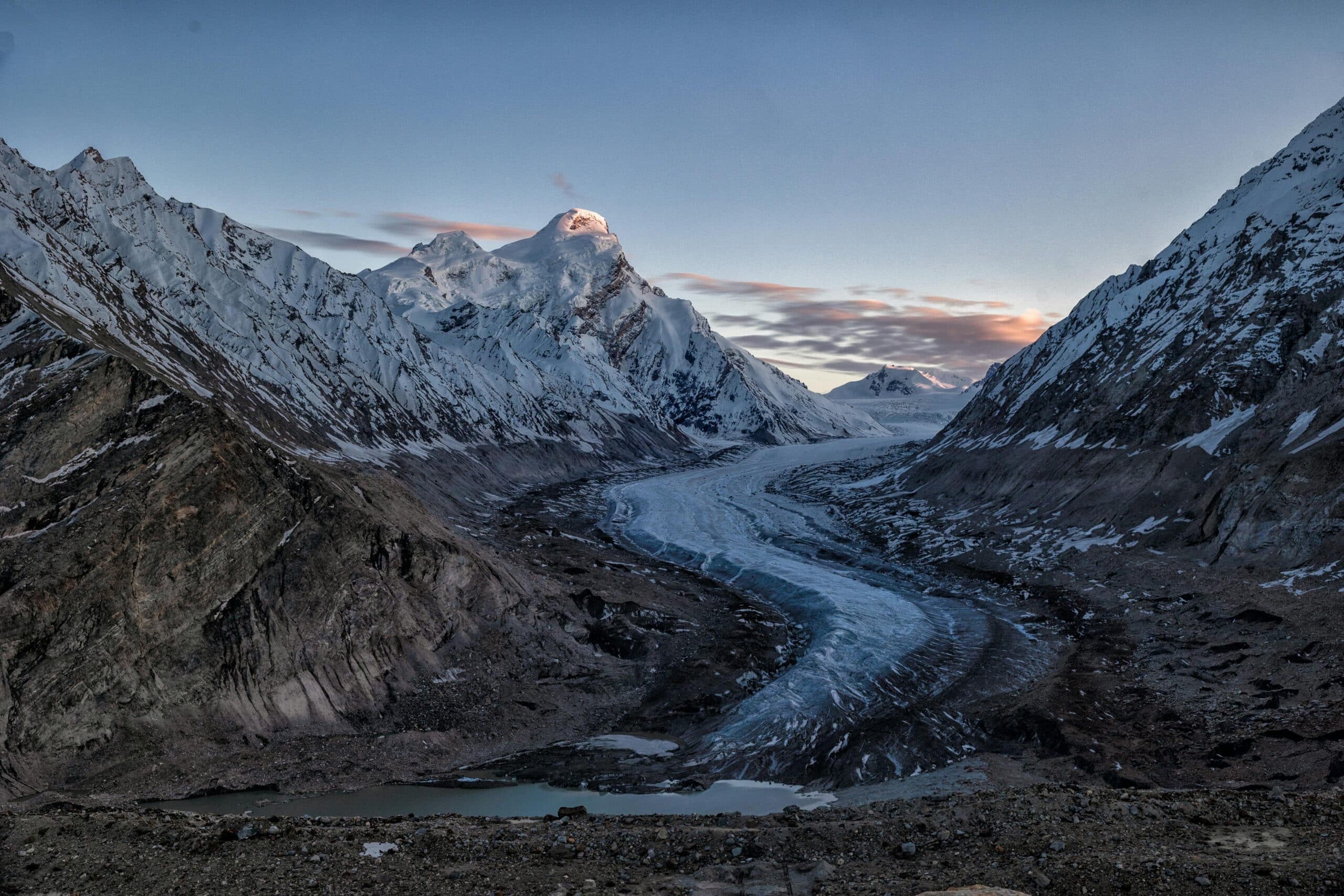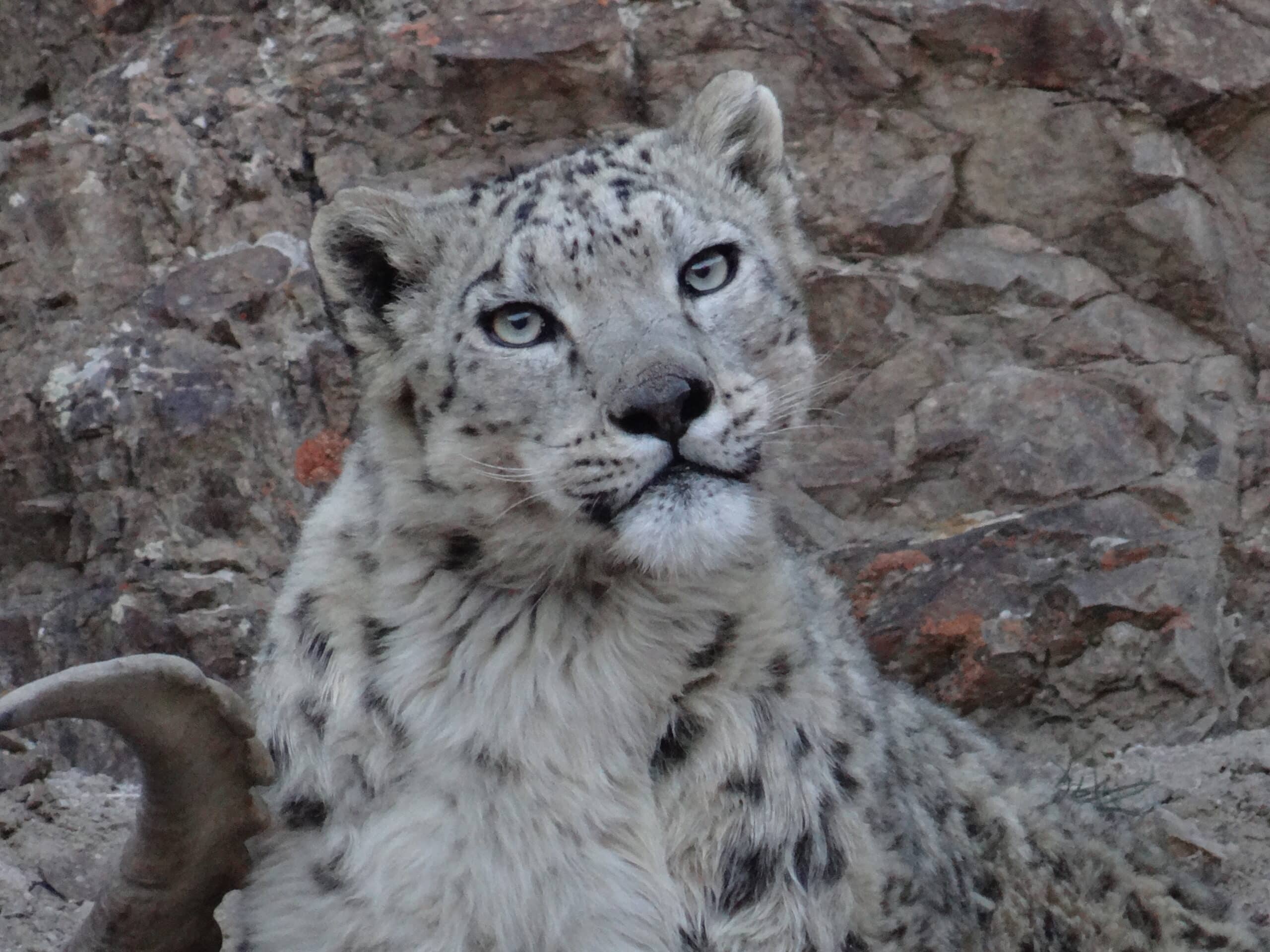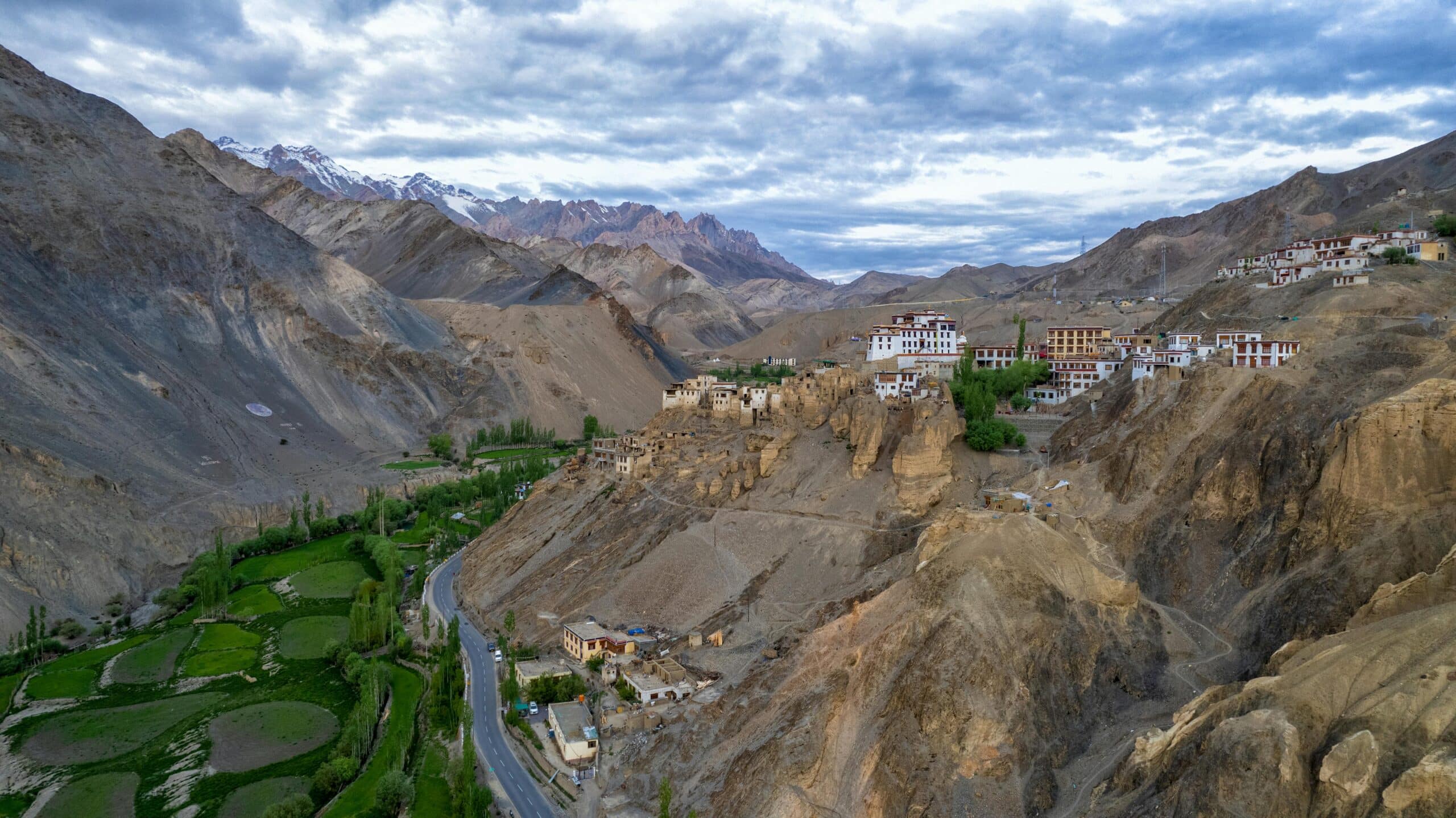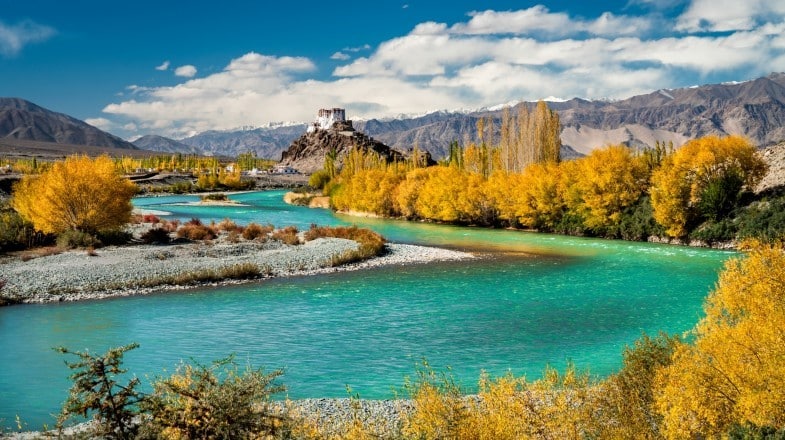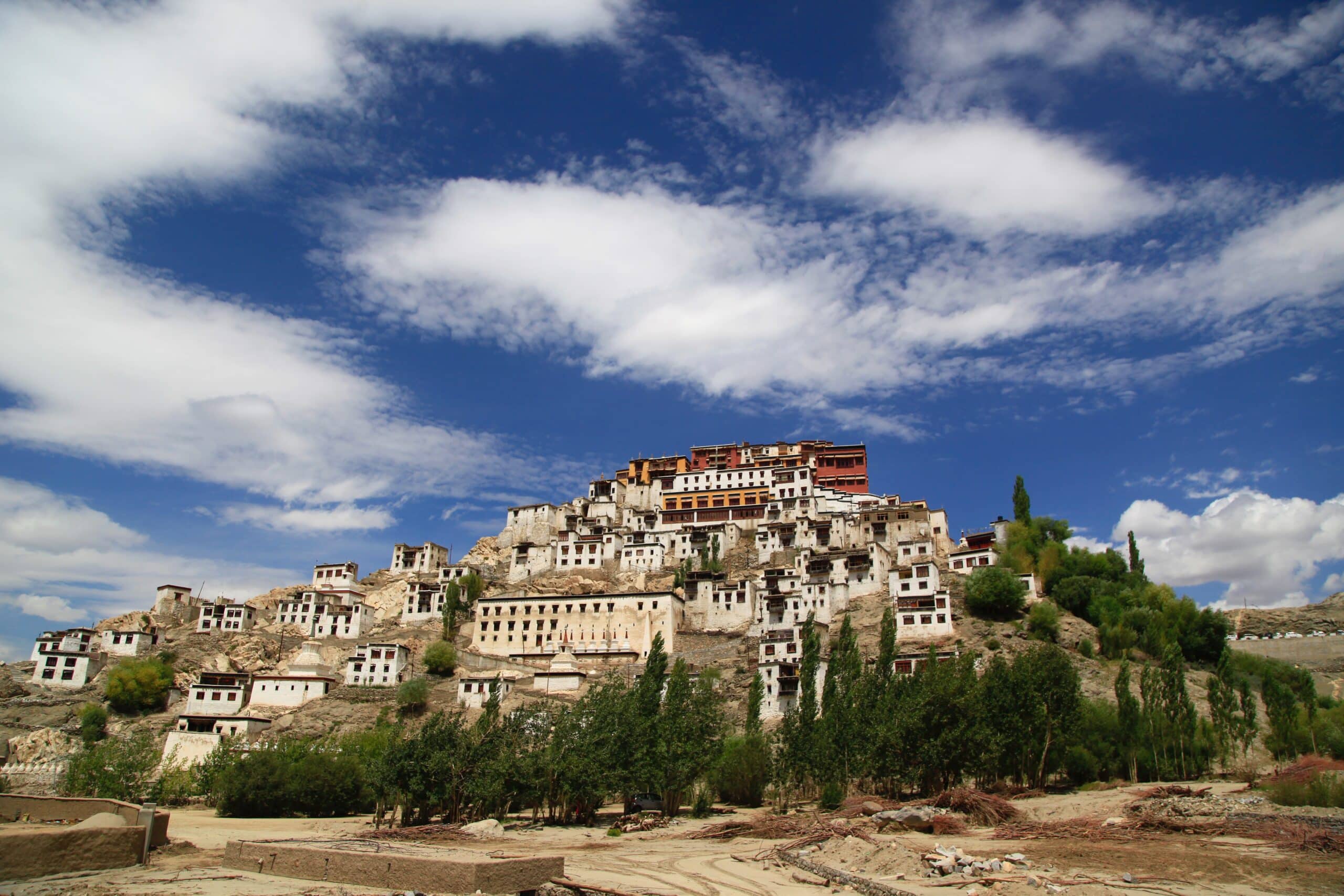- Transport Included
- Meals Included
- Hotel Included
- Pickup/ Drop Point: Chandigarh/Leh
Trans Himalayan Journey Manali-Ladakh
The Thrilling Driving Experience crossing worlds highest motorable roads
Trans Himalayan Journey Manali-Leh
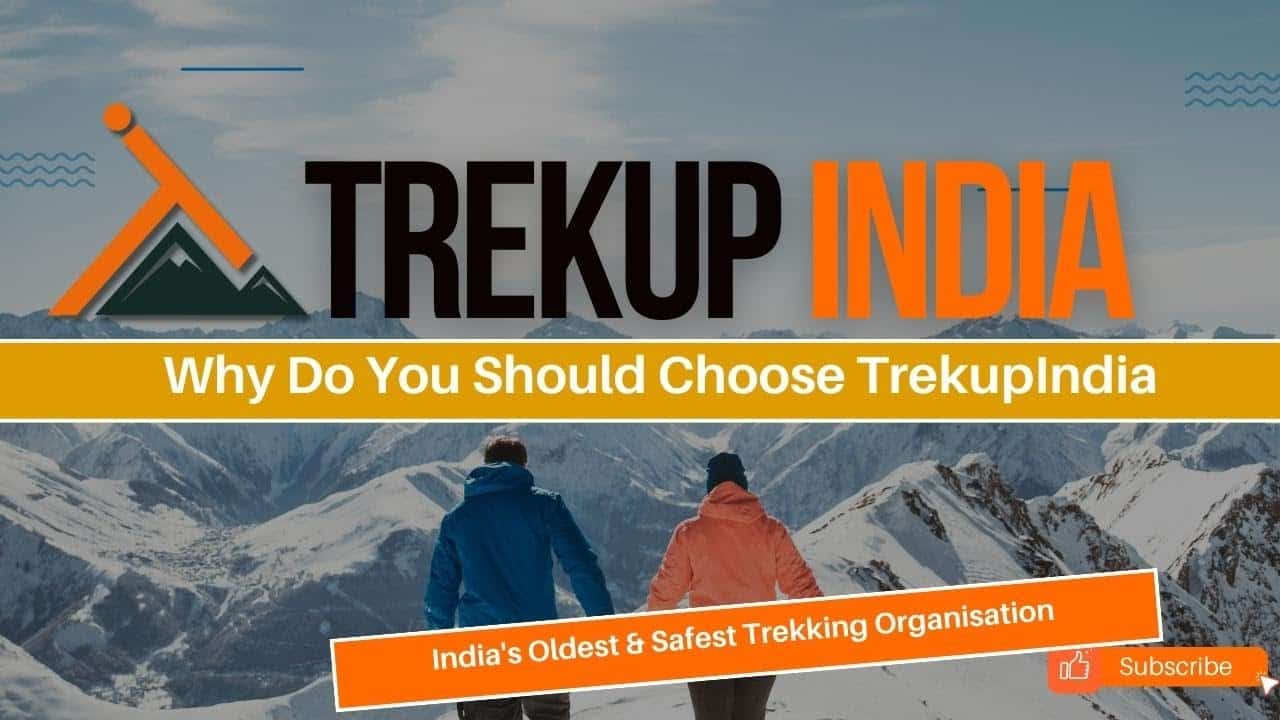
Play Video about why you should choose-trekup india
As you will be embarking on Manali to Ladakh, navigating through the Trans-Himalayan area, get ready for an exciting and captivating adventure. We have compiled some valuable advice and recommendations to ensure a smooth and unforgettable journey.
Route planning: Trekup India has carefully planned your travel route considering the weather, road conditions, and altitude. The most frequently used route is the Manali-Leh Highway (NH3), which is open from May to September.
Acclimatization: Allow your body to adjust to the higher elevation by gradually increasing your altitude exposure. This will help minimize the risk of altitude sickness. If you’re traveling from a lower altitude, consider spending a few days in Manali or similar high-altitude locations before proceeding to Ladakh. This will give your body time to acclimatize properly. Be mindful of the potential onset of acute mountain sickness (AMS) manifesting as headaches, queasiness, dizziness, or difficulty breathing. If such symptoms persist or intensify, promptly descend to a lower elevation to alleviate and address the condition.
Vehicle: Before embarking on your journey, make sure your vehicle is in top shape, particularly if you’ll be driving your own car or motorcycle. It’s a good idea to have a spare tire, extra fuel, and the tools needed for basic repairs. Additionally, consider the terrain you’ll be driving on and how a high-clearance vehicle might be beneficial.
Packing Essentials: When preparing for your adventure, don’t forget to bring along the essentials to ensure a safe and comfortable journey. These include warm and sturdy clothing, sunscreen, sunglasses, a first aid kit, and an adequate supply of food and water. Additionally, be sure to pack any necessary medications, particularly if you’re susceptible to altitude sickness.
Permits: Before embarking on your journey, ensure that you have obtained the necessary permits, particularly for regions like Rohtang Pass, which require specific permits for vehicles not registered in Himachal Pradesh Nubra Valley and Pangong in Ladakh.
Weather Awareness: Stay alert to changing weather patterns, particularly in areas with mountains. It’s important to have rain gear and warm clothes with you, even if you’re journeying in the summer season.
Road Conditions: Expect to encounter rough and occasionally demanding road conditions, which may involve areas without pavement, steep inclines and declines, and narrow paths. Exercise caution while driving and remain aware of approaching vehicles, particularly on narrow segments.
Local Culture and Custom: When journeying through various regions, it’s essential to embrace and respect the unique cultural practices and traditions of the local communities. Make a conscious effort to minimize your impact on the environment by avoiding littering and being mindful of your surroundings.
Photography: When taking pictures, make sure to capture the stunning scenery and views during your journey, but also remember to be considerate of the cultural and religious sensitivities towards photography, particularly in sacred places. With locals take permission first and then click the photos, do not randomly click anyone’s photo anywhere.
Travel Insurance: Invest in a safety net for your adventure: Medical emergency and evacuation coverage is a wise consideration for those venturing into remote regions such as Ladakh, through travel insurance. Hence Trekup India recommends all our travellers to get their travel insurance.
Day Wise itinerary of Trans Himalayan Journey
Chandigarh (1050 Ft.) - Manali (6726 Ft.) by surface 310 Kms approx 8 Hrs
On your arrival at Chandigarh airport/Railway station, meet be met by our driver. After that, we take a drive to Manali. The driver will continue to Mandi, the following central town. Mandi is the headquarters of the District of the Kullu District. There is also an opportunity to sample freshly squeezed apple juices or, if you wish, buy fresh pickles. Before we reach Manali, we will stop in Nagar, which was the capital city of Kullu Rajas (King) until 1660 A.D. The old Castle, that’s since been transformed into a Tourist Bungalow is situated in the Beas valley. In this area, we can visit two temples once located near the Castle. Also, Nicholas Roerich, the famous Russian philosopher and painter who was a resident of Nagar, and his tiny house has been transformed into a museum. Then we continue our journey to Manali. Evening at leisure.
Overnight stay in the hotel Meal: Breakfast & Dinner Only
Day 02: In Manali - Exploration Day
Enjoy a leisurely breakfast at the hotel and thereafter start your day by paying a visit to the stunning Hadimba Temple, nestled in a tranquil forest setting. This beautiful wooden temple is dedicated to the goddess Hadimba and offers a peaceful ambiance that sets the tone for the rest of your day. Afterward, make your way to the Manu Temple, located on the banks of the Beas River and steeped in Hindu mythology. This temple is dedicated to the sage Manu, who is believed to have created the human race. In the afternoon, take a stroll through Van Vihar, a picturesque park with towering deodar trees, the lush green surroundings are sure to rejuvenate your senses and refresh you. Later we, head to the bustling Mall Road, the main shopping and dining hub of Manali. Here, you can explore the local markets, browse for souvenirs, and indulge in some delicious local cuisine at one of the many restaurants or cafes. The lively atmosphere and vibrant street life will surely cap off your day in style. In the evening we will also visit the Tibetan Monastery in Manali, also recognized as Gadhan Thekchhokling Gompa, to immerse ourselves in a peaceful atmosphere and gain insight into Tibetan traditions and Buddhist teachings.
Overnight stay in the hotel Meal: Breakfast & Dinner Only
Day 03: Manali (6,726 ft.) - Jispa (10,500 ft.) by Surface 105 Kms approx 5-6 Hrs
Today we commence our journey from Manali to Jispa, we drive through The Atal Tunnel, named after former Indian Prime Minister Atal Bihari Vajpayee, is a recently constructed tunnel that bypasses the Rohtang Pass. Enjoy the Scenic drive while traversing through the Atal Tunnel, you will be treated to picturesque vistas of the surrounding mountains and valleys, after exiting the Atal Tunnel, you will emerge close to the town of Keylong, which serves as the administrative hub of the Lahaul and Spiti district. Take a moment to appreciate the views of the surrounding landscape before continuing your journey towards Jispa. Drive to Jispa: From Keylong, it is a relatively short drive to reach Jispa, which is approximately 35 kilometers away. The road winds alongside the Bhaga River, offering breathtaking views of the valley and the majestic peaks of the Himalayas. Arrival in Jispa: Upon arrival in Jispa, you will be greeted by the charming village nestled amidst the mountains. Take some time to explore the village, relax, and immerse yourself in the tranquility of the surroundings. Altitude Considerations: Jispa is situated at an altitude of around 10,500 feet, so it is important to be aware of altitude-related symptoms such as headaches, dizziness, or fatigue. Take it easy, stay hydrated, and give your body sufficient time to adjust to the altitude.
Overnight stay at Hotel/Guest House Meals Breakfast and Dinner Only
Day 04: Jispa (10500 Ft.) - Sarchu (14070 Ft.) - Leh (11562 Ft.) by Surface 270 kms approximately 10-12 hours via Baralacha La Pass (16500 ft.) & Taklang La (17,582 ft.)
Early morning, you’ll depart Jispa heading toward Sarchu and then ascend to Patseo. There is a lake at a height of 12,600 feet. It will be awe-inspiring considering the barren landscape surrounding it. After crossing Patseo it is a climb along a winding road through rocky outcrops to Zingzingbar and continue on your journey through to the Baralacha La Pass (4,830 m 16500 feet) that translates to “the pass with the crossroads at the top‘. In the afternoon, we’ll cross one of the highest motorable passes in the world: Taklang La (5,336 M / 17,582 feet) when you cross the pass, the complete force of the sheer beauty of barren mountains is greeted by you. The Near Distance Mountains are greenish-brown in hue, the ones in the middle distance are greyish – purplish and snow-capped peaks can be seen from a distance. A drive of about an hour will take you to the top of the pass, which is where you meet the stream created by melting snow. After that, the road slowly lowers as it follows the river’s course. After passing through the pass, the road leads you back to the city by passing through charming villages with fields that are well-groomed and eventually joins with the Indus River at Upshi. From Upshi about an hour’s drive on a smooth broad road flowing downstream along the Indus River will bring the driver to Leh. After the sluggish and bumpy experience of traversing mountains with high passes, the smooth, fast journey between Upshi to Leh is a pleasant relief. Evening at leisure.
Overnight stay in the Guest House / Hotel Meal: Breakfast & Dinner Only
Day 05: In Leh (Choglamsar Village Spituk Gompa Shanti Stupa, Sankar Gompa)
In the morning, we will visit to Choglamsar is a gorgeous village. It is a gorgeous Tibetan refugee camp that is known as a village for children and a craft center that is primarily focused on carpet weaving. The most visited place in this area is the Central Institute of Buddhist Studies which is the principal training institution of Buddhist monks. Ladakh The Dalai Lama’s sacred site called Jivatsal is a place of tranquillity. Then we travel to Spituk Gompa, which was established in the 11th century. It is part of the Kadampa School and with the passing of time, it was brought under the Dharmaraja Takspa Bum Lde Lama Lhawang Lotus who established an order made of stainless Tsongkhapa in the area. The museum of the monastery has an extensive collection of old masks, ancient arms, various icons, and many Thangkas. Then we will drive to the Shanti Stupa situated in Leh which is a symbol of peace and unity, In the next visit, we will visit Sankar Gompa which is the gompa contains paintings and murals depicting the god of protection of the Four Quarters of Heaven, the wheel of Life and the old man of Longevity Sakyamuni Buddha and his 16 sages as well as the 35 Buddhas who are benevolent. There are pictures of the Buddhist god of compassion, Avalokiteshvara as well as Yamantaka (God of Death) The most striking being the one with 1000 heads as well as legs and arms. About 20 monks reside in the Gompa. Explore the evening at Leh Market.
Overnight stay in the Guest House / Hotel Meal: Breakfast & Dinner
Day 06: Leh (11562 ft.) -Nubra Valley (11000 Ft.) surface 125 Kms approx. 5-6hrs via Khardungla Pass (18360 ft.)
After breakfast, take an amazing journey to Nubra Valley crossing Khardungla Pass which is 18360 feet. On one of the highest motorable roads in the world, later in the afternoon, we will stroll around the Hunder village, which is famous by its dunes of sand, which sit beautifully amidst snow-capped mountains and lush valleys, and rivers. It is an area where you can discover dunes of sand and rivers. mountains. We will visit to Diskit Gompa founded by Lama Sherab Zangpo in around 1420 AD under the time of King Dragspa. Around 100 monks live in the Gompa which is a part of Thikse Monastery. After that, travel through the Hunder Sand dunes to meet and engage with the camel herders. We will have interaction with them, and learn about their daily routine. Then we’ll enjoy and go on a double hump camel ride (At additional cost). The remainder of the evening will be at leisure, time to do your own leisure activities.
Overnight stay in the Camps / Hotel Meal: Breakfast & Dinner
Day 07: Day excursion to Turtuk Village Last Indian village on India-Pakistan border by surface 85 Kms approx 2.5-3 Hrs one way
Today morning enjoy breakfast at the accommodation, thereafter we will proceed our drive to Turtuk village, it is one of the gateways into Siachen Glacier, the last outpost in India before it is incorporated into Pakistan-controlled Gilgit-Baltistan, the region is culturally, language, and historically distinct from rest of Ladakh. However, it has breathtaking low mountains and small valleys, later after exploration we will return back to Nubra Valley. Evening at leisure.
Overnight stay in the Camps / Hotel Meal: Breakfast & Dinner
Day 08: Nubra Valley (11000 Ft.)– Pengong Lake (14,270 Ft.) via Shyok by surface 245 Kms approx 6-7 Hrs
Today we start early from Nubra Valley towards Pengong Tso via Shyok (only when the route is cleared and accessible), in this journey, we will enjoy the incredible Himalayan landscape, evening reaching Pangong Lake, located on the border between India and China, it is a visually pleasing destination with its numerous watercolors. We check into our beautiful camps followed by dinner, at night enjoy the sparkling and shooting stars in a clear sky, this will be of lifetime experience.
Overnight stay in the Camps / Hotel Meal: Breakfast & Dinner
Day 09: Pengong Lake – Leh by surface 225 Kms approx 5-6 Hrs
Enjoy the morning sunrise in Pengong lake, have a delicious breakfast and thereafter we return to Leh following the same route that passes via Changla La (pass) (17388 Ft), on the way we see Sindhu Ghat, famous for Sindhu Darshan Festival of Ladakh, on the banks of Indus River. Enroute to Leh we will visit Hemis Monastery, 40 kms to Leh’s southeast, founded during the reign of Emperor Singge Namgyal, in 1672 AD. The monastery is adorned with stunning art and a Statue of Lord Buddha, which are the important highlights. Thereafter we will also visit Thikse Gompa, located in a part of the Yellow Hat (Gelugpa) sect. The style of the largest temple in central Ladakh resembles the Potala Palace in Lhasa, Tibet. The complex, which spans 12 stories, consists of objects related to Buddhist art, like Thangka-inspired paintings, stupas, and statues of swords as well as other things. The building also houses the monastery. Evening on reaching Leh we check into our booked accommodation, evening at leisure, free for your own accommodation.
Overnight stay at Hotel Meal: Breakfast & Dinner Only
Day 10: Departure from Leh
Today well in time we will be transferred to Leh airport to board our flight back to home.
No Accommodation Meals: Breakfast Only
Expert Guidance
As you will be embarking on Manali to Ladakh, navigating through the Trans-Himalayan area, get ready for an exciting and captivating adventure. We have compiled some valuable advice and recommendations to ensure a smooth and unforgettable journey.
Route planning: Trekup India has carefully planned your travel route considering the weather, road conditions, and altitude. The most frequently used route is the Manali-Leh Highway (NH3), which is open from May to September.
Acclimatization: Allow your body to adjust to the higher elevation by gradually increasing your altitude exposure. This will help minimize the risk of altitude sickness. If you’re traveling from a lower altitude, consider spending a few days in Manali or similar high-altitude locations before proceeding to Ladakh. This will give your body time to acclimatize properly. Be mindful of the potential onset of acute mountain sickness (AMS) manifesting as headaches, queasiness, dizziness, or difficulty breathing. If such symptoms persist or intensify, promptly descend to a lower elevation to alleviate and address the condition.
Vehicle: Before embarking on your journey, make sure your vehicle is in top shape, particularly if you’ll be driving your own car or motorcycle. It’s a good idea to have a spare tire, extra fuel, and the tools needed for basic repairs. Additionally, consider the terrain you’ll be driving on and how a high-clearance vehicle might be beneficial.
Packing Essentials: When preparing for your adventure, don’t forget to bring along the essentials to ensure a safe and comfortable journey. These include warm and sturdy clothing, sunscreen, sunglasses, a first aid kit, and an adequate supply of food and water. Additionally, be sure to pack any necessary medications, particularly if you’re susceptible to altitude sickness.
Permits: Before embarking on your journey, ensure that you have obtained the necessary permits, particularly for regions like Rohtang Pass, which require specific permits for vehicles not registered in Himachal Pradesh Nubra Valley and Pangong in Ladakh.
Weather Awareness: Stay alert to changing weather patterns, particularly in areas with mountains. It’s important to have rain gear and warm clothes with you, even if you’re journeying in the summer season.
Road Conditions: Expect to encounter rough and occasionally demanding road conditions, which may involve areas without pavement, steep inclines and declines, and narrow paths. Exercise caution while driving and remain aware of approaching vehicles, particularly on narrow segments.
Local Culture and Custom: When journeying through various regions, it’s essential to embrace and respect the unique cultural practices and traditions of the local communities. Make a conscious effort to minimize your impact on the environment by avoiding littering and being mindful of your surroundings.
Photography: When taking pictures, make sure to capture the stunning scenery and views during your journey, but also remember to be considerate of the cultural and religious sensitivities towards photography, particularly in sacred places. With locals take permission first and then click the photos, do not randomly click anyone’s photo anywhere.
Travel Insurance: Invest in a safety net for your adventure: Medical emergency and evacuation coverage is a wise consideration for those venturing into remote regions such as Ladakh, through travel insurance. Hence Trekup India recommends all our travellers to get their travel insurance.
Best Time for Trans Himalayan Journey
May to September mark the summer season in Ladakh, attracting a surge of tourists. The daytime temperature fluctuates between a pleasant 15°C and 30°C (59°F and 86°F), creating an ideal atmosphere for thrilling outdoor adventures like trekking, mountain biking, and rafting. During this period, the roads connecting Ladakh to the rest of the country are accessible.
During the monsoon season from July to August, Ladakh receives very little rainfall in comparison to other parts of India. Although there may be sporadic showers, road transportation may face disruptions from landslides.
September to October brings autumn to Ladakh, offering a pleasant climate and picturesque landscapes adorned with vibrant fall colors. As the month of October comes to a close, the temperature gradually decreases, signaling the onset of winter.
November to April, Ladakh’s winter season brings bitterly cold temperatures, often dipping below freezing with lows of -20°C (-4°F) or lower. Heavy snowfall closes many roads, including the well-known Manali-Leh and Srinagar-Leh highways. However, the winter months offer a unique experience for enthusiasts, with activities like the Chadar Trek, which involves walking on the frozen Zanskar River, and immersing in the region’s distinct winter culture.
Why your Trip is Safe & Secure with us?
Professional & Experienced Team: Trekup India has professional and highly Experienced Tour Experts to assist and guide you for better tour planning, our yatra experts possess extensive knowledge of the destination, local traditions, and potential hazards. With our expertise, you will enjoy a seamless and secure Trip.
Trekup India Adventures Pvt. Ltd. is a reputable tour operators, who prioritize safety by implementing well-defined protocols to minimize potential hazards during excursions. These measures may encompass routine safety briefings, emergency response plans, and thorough risk evaluations for various activities.
Certifications & Affiliations: Trekup India holds all valid licenses, certificates, and affiliations and is authorized by the Government to Uttarakhand to operate Tours in India. We are also registered with the Uttarakhand Tourism Board and are affiliated with the Indian Mountaineering Foundation (IMF) and Adventure Tour Operators Association of India (ATOAI), Trekup India compliance with all rules and guidelines established by governing bodies.
Certified Accommodation and Transport: Trekup India is a trusted and Reliable tour operator with huge collaboration with established accommodations to ensure comfortable stays and guaranteed reservations, we own a fleet of transportation to provide safe and hassle-free drives.
Seasoned, Experienced Chauffeurs: Trekup India provides experienced licensed drivers on all the trip with a minimum of 5 years of driving experience in the respective tour region..
24×7 Hour Support: Trekup India provides uninterrupted support to its travelers, giving them the peace of mind that they can reach out for help at any time, whether it’s an emergency or an unforeseen circumstance, day or night, throughout their journey.
What should you pack for the Trip?
Prioritize the essential items to bring for your trip to Leh Ladakh by creating a checklist beforehand.
To ensure a successful Trans Himalayan Journey from Manali to Leh Ladakh trip, it’s crucial to create a comprehensive packing checklist. Begin by jotting down all the essentials you’ll need for the journey, and then carefully review the list to eliminate any items that might be unnecessary or cumbersome. Don’t forget to include vital documents like your passport, tickets, IDs, and any other important paperwork. Additionally, make a note of easily forgettable items like your mobile phone, charger, power bank, and the like.
Essential items to bring along to lower the chances of contracting the COVID-19 virus or its variants:-
– Masks
– Hand sanitizers
– Disinfectant wipes or spray,
– Tissues or Napkins,
– Extra towels
Make sure to pack your usual clothes for your Leh Ladakh trip, but don’t forget to bring some warm clothes to stay comfortable in the cold climate of Ladakh. While you may not feel the chill on your first day there, it’s crucial to dress warmly and keep yourself cozy.
The optimal time to explore Ladakh is May to September the temperature is moderate, falling between 10°C and 25°C in Leh. However, certain areas such as Changhtang, Pangong Tso, and KhardungLa experience frigid nights, so it’s essential to pack warm attire, as suggested below, to ensure a comfortable trip.
– A Winter Jacket
– 3 Pairs of Thermals (both upper & lower)
– 2 Sweaters/sweatshirts
– Hoodies
– Pair of Sport Shoes
– Pair Sandal
– Undergarments
– Socks
– Sun Hat, Balaclava
– Hiking/Trekking Trousers
– Jens and T-Shirt
– Sun Glasses
Additional Gears and Accessories
– Pack a backpack equipped with a rain cover
– Include a headlamp or flashlight with spare batteries to help you see in the dark.
– Bring along a multi-tool or Swiss Army knife for various tasks.
– Power bank to charge your electronic gadgets since access to electricity might be limited.
– Camera or smartphone to capture the breathtaking views of Ladakh.
– Trekking/ Hiking poles for additional stability and support while hiking.
– As a precaution against altitude sickness, bring along a portable oxygen cylinder or canisters.
Remember to pack your toiletries bag for your Leh Ladakh
Toothbrush, Toothpaste, Shampoo, Conditioner, Soap, facewash, talcum, Doe powder, Toilet paper and any other personal hygiene items you may need. While luxury hotels may provide these amenities, it’s important to bring your supplies when staying in budget-friendly accommodations.
Personal First Aid Kit
Consider packing a comprehensive first aid kit to ensure your safety and well-being during your challenging journey. The long duration spent traveling through mountain passes can be physically and mentally demanding, so it’s essential to be prepared for any potential health issues that may arise. A well-stocked first aid kit can provide you with the necessary supplies to address any unexpected problems and help you manage stress and discomfort.
Examples of medications to include are those for headaches, stomach problems, colds, fevers, Pain relief Spray, ORS, Diamox, etc, and any other remedies you anticipate needing.
Travel Documents:
– Air/Flight Tickets
– Copy of your Travel itinerary
– Passport, Aadhar card & Copies
– India Visa for Foreign National
– ILP (Inner Line Permits)
– 3-4 Passport Size Photographs
– Hotel Reservation Vouchers
Trip Cost Inclusion
- Accommodation: 09 Nights Hotel / Guest house / Swiss Camps accommodation on double sharing basis
- Meals: Meals served during the trip will be on a MAP basis i.e. Breakfast and Dinner Only (Starting with Dinner on day 01 and ending with Breakfast on Day 10) all meals will be on a fixed base menu.
- Transportation: Transportation as per the itinerary from Day 01 till Day 10 (non-ac) in the mountains.
- Environmental Fee of Ladakh
- Inner Line Permits for traveling to Nubra Valley and Pangong Lake
- All Fuel Expenses for the vehicle
- Driver daily allowance
- All Toll Tax, Road Tax, State Tax, and Parking Fees are included
- 24×7 hours communication services
Trip Cost Exclusion
- GST of 5% will be additional on Invoice
- Any travel / Health insurance (Trekup India recommends you take your insurance)
- Any additional meals such as Enroute Meals, Tea snacks, Lunch
- Any Airfare to/from Leh (Trekup India will be happy to book it with additional cost)
- Any Medical expenses, do carry your personal medication
- Any personal services such as Laundry, phone calls, liquors, mineral water, etc.
- Any still / video camera fee
- Any Entrance fee for Monuments, Monasteries, Museums, Temples Pay directly on the spot
- Double Hump Camel ride in Nubra Valley on direct pay on the spot
- Any Guide services – will be arranged by Trekup India on request at an additional cost.
- Any services that are not mentioned in the cost inclusion section
How To Reach Chandigarh?
By Air: Chandigarh can be reached by air through its domestic airport, Chandigarh Airport (IATA: IXC), which is about 12 kilometers (7.5 miles) from the city center. The airport offers regular flights to several major Indian cities, including Delhi, Mumbai, Bengaluru, Chennai, and Hyderabad. From the airport, you can choose from a variety of transportation options, such as taxis, buses, or pre-arranged vehicles, to get to your destination in Chandigarh.
By Train: Chandigarh is accessible by train via the Chandigarh Junction Railway Station (CDG), which is the primary railhead serving the city. This station is well-connected to major Indian cities, including Delhi, Mumbai, Kolkata, Chennai, Bengaluru, and Hyderabad, and is served by several Indian Railways trains. Alternatively, travelers can use Kalka Railway Station, located about 20 kilometers (12 miles) from Chandigarh, as another entry point. From Chandigarh Junction Railway Station, visitors can easily hail taxis, auto-rickshaws, or buses to reach their desired destination within Chandigarh.
By Road: Chandigarh has good road connectivity, with buses running from neighboring cities and states. National Highway 5 (NH5), NH 7, and NH 44 pass through or close to Chandigarh, linking it to important cities such as Delhi, Jaipur, Amritsar, Ludhiana, and Shimla. Both state-run and private buses serve the route between Chandigarh and nearby areas. Furthermore, you have the option to take taxis or drive yourself to reach Chandigarh via the road network.
Getting Around Chandigarh: Chandigarh offers a variety of convenient transportation options for navigating the city once you’ve arrived. You can choose from buses, auto-rickshaws, cycle-rickshaws, and taxis, all of which are part of a well-organized and efficient public transportation system. The city’s road network is also well-planned, making it easy to get where you need to go.
Reviews

 yallaling goudar2024-03-06
yallaling goudar2024-03-06 I have done kedarkanta trekk with trekkup India, one who love snow,,it is must recommended place to trekk, team trekkup( trekk leaders Vivek, nilesh, maninder) very co operative, facility provided by them is next level, if I tell about the place, lot of awesome views of mighty Himalayas, adverse extreme living experience in tents with night snowfall, clear sky with freezing temperatures at night, more people to make friends and sharing life experiences and view, one small suggestion, before doing this trekk you should start doing exercises atleast 10 days before this trekk, this will helps you lot,
I have done kedarkanta trekk with trekkup India, one who love snow,,it is must recommended place to trekk, team trekkup( trekk leaders Vivek, nilesh, maninder) very co operative, facility provided by them is next level, if I tell about the place, lot of awesome views of mighty Himalayas, adverse extreme living experience in tents with night snowfall, clear sky with freezing temperatures at night, more people to make friends and sharing life experiences and view, one small suggestion, before doing this trekk you should start doing exercises atleast 10 days before this trekk, this will helps you lot,
 Abhay V Ashokan2024-03-06
Abhay V Ashokan2024-03-06 This was my very first experience in snow. Trekup India has done a phenomenal job for making all the arrangements. The journey is really physically demanding, but the view is a once in a lifetime experience.
This was my very first experience in snow. Trekup India has done a phenomenal job for making all the arrangements. The journey is really physically demanding, but the view is a once in a lifetime experience.
 Santhosh Naik2024-03-06
Santhosh Naik2024-03-06 To walk on slippery ice and fall umpteen times, to be hungry and thirsty for hours, to experience sub-zero temperature etc. was not easy. While the trek may not be easy, the experience was exquisite and virgin. The thrill of reaching the peak pumped me up and its going to keep me energized / spirited. It happened only because of Trek up India (Our Team leaders Manindar Sing and Neelesh Bro.... Thank you Trek up India).
To walk on slippery ice and fall umpteen times, to be hungry and thirsty for hours, to experience sub-zero temperature etc. was not easy. While the trek may not be easy, the experience was exquisite and virgin. The thrill of reaching the peak pumped me up and its going to keep me energized / spirited. It happened only because of Trek up India (Our Team leaders Manindar Sing and Neelesh Bro.... Thank you Trek up India).
 Gulesh Kumar2024-03-06
Gulesh Kumar2024-03-06 Joined them for kedarkantha trek and it was amazing experience. ✅Food is amazing at all the camps ✅They have best location for their camps ✅Staff and trek leaders (Nilesh) are amazing, trained and helpful. ✅Their homestay in sankari village is beautiful. In short, worth every penny experience.💯
Joined them for kedarkantha trek and it was amazing experience. ✅Food is amazing at all the camps ✅They have best location for their camps ✅Staff and trek leaders (Nilesh) are amazing, trained and helpful. ✅Their homestay in sankari village is beautiful. In short, worth every penny experience.💯
 Dr.Namish kumar2024-03-06
Dr.Namish kumar2024-03-06 It was a wonderful experience, starting from stay to food to trek leader Nilesh, Vivek, Maninder, Had thrilling and breathing taking experience Team was very professional and expert in there task Full mark's to the team Waiting for more treks from the trekup India Good luck 🤞
It was a wonderful experience, starting from stay to food to trek leader Nilesh, Vivek, Maninder, Had thrilling and breathing taking experience Team was very professional and expert in there task Full mark's to the team Waiting for more treks from the trekup India Good luck 🤞
 Harshit Verma2024-03-06
Harshit Verma2024-03-06 Osm first time experience..food was amazing and trek guides were very supportive
Osm first time experience..food was amazing and trek guides were very supportive
 Jeevesh Singh2024-03-06
Jeevesh Singh2024-03-06 Very good
Very good
 Fatema Sadriwala2024-03-06
Fatema Sadriwala2024-03-06
FAQs About The Trip
What's the best time to go?
June to September offers the most pleasant weather, but July and August see peak season crowds. Shoulder seasons (May-June & Sept-Oct) have fewer crowds and good weather. Avoid winter (Oct-Mar) due to closed roads and extreme temperatures
Do I need permits for this trip?
Yes, an Inner Line Permit (ILP) is mandatory for foreign nationals. Indians need a Protected Area Permit (PAP) for Pangong Tso and Nubra Valley.
Do I need special gear?
Pack warm clothes (temperatures can drop drastically), comfortable hiking shoes, sunscreen, sunglasses, a hat, and a good water bottle. Consider renting oxygen cylinders if concerned about altitude sickness.
How do I avoid altitude sickness?
Ascend gradually, stay hydrated, avoid strenuous activity on arrival, and listen to your body. Diamox medication can help prevent symptoms.
What are the symptoms of altitude sickness?
Headache, dizziness, nausea, fatigue, and shortness of breath. Seek medical attention if symptoms worsen.
What are the major highlights of the journey?
Rohtang Pass, Baralacha La, Pangong Tso, Nubra Valley, Khardung La, Thiksey Monastery, Hemis Monastery, Leh Palace.
What are the road conditions like?
Expect winding mountain roads, loose gravel, and potential for landslides, especially during monsoon season. Drive cautiously and obey traffic rules.
What are the border regulations for Nubra Valley?
Indian citizens need a separate permit to visit Nubra Valley due to its proximity to the China border.
Additional Tips for this trip:-
– Carry sufficient cash, as ATMs are limited in remote areas. – Respect local culture and traditions. * Be mindful of the environment and dispose of waste responsibly. * Leave no trace and minimize your impact on the fragile ecosystem. * Enjoy the breathtaking scenery and unique experiences this journey offers!

